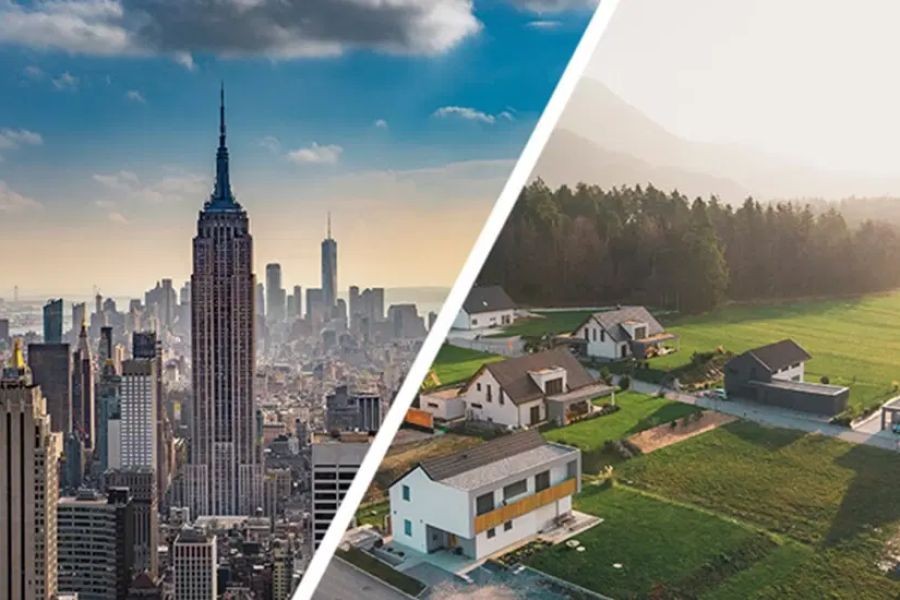Urban living in New Zealand offers a unique lifestyle that is both vibrant and challenging. When compared to cities in North America, New Zealand's urban centers present distinct characteristics that stem from cultural, economic, and policy differences. This article delves into those differences, providing an insightful, data-backed analysis that highlights why these variances matter and how they shape the Kiwi way of life.
Comparative Overview of Urban Living: New Zealand vs. North America
Urban areas in New Zealand, such as Auckland, Wellington, and Christchurch, are known for their stunning landscapes, strong community ties, and a commitment to sustainability. In contrast, North American cities like New York, Los Angeles, and Toronto are characterized by their larger populations, diverse cultures, and economic opportunities. While both regions offer vibrant city life, the scale and nature of urban living differ significantly.
Population Density and Urban Planning
New Zealand's urban areas are less densely populated compared to major North American cities. According to Stats NZ, Auckland, the largest city in New Zealand, has a population density of about 1,210 people per square kilometer, while New York City boasts over 10,000 people per square kilometer. This lower density in New Zealand influences urban planning, leading to more green spaces and less congestion.
Economic Opportunities and Employment Trends
Economically, New Zealand's urban centers are buoyed by industries such as technology, agriculture, and tourism. The Ministry of Business, Innovation and Employment (MBIE) reports that the tech sector alone contributes over $12 billion to the economy annually. In contrast, North American cities often rely on a broader range of industries, including finance, healthcare, and entertainment, providing diverse employment opportunities.
Sustainability and Environmental Policies
New Zealand's commitment to sustainability is evident in its urban development policies. The government has set a target to achieve 100% renewable electricity by 2035. This goal influences urban infrastructure, promoting public transport and green building initiatives. North American cities vary widely in their environmental policies, with some leading in sustainability efforts while others lag behind.
Housing and Cost of Living
The cost of living in New Zealand's urban areas is relatively high, driven by housing costs. Stats NZ has documented a 27% rise in property prices from 2020 to 2024, leading to affordability concerns. North American cities also face high living costs, but the factors driving these costs can differ, often related to the availability of housing and local economic conditions.
Case Study: Auckland's Urban Growth Strategy
Problem: Auckland, facing rapid population growth, struggled with housing shortages and infrastructure strain.
Action: The Auckland Council implemented the Auckland Plan 2050, a long-term strategy focusing on sustainable growth, improved public transport, and increased housing supply.
Result: Within three years, public transport usage increased by 20%, and housing construction surged by 15%, easing some housing pressures.
Takeaway: Strategic urban planning, focusing on sustainability and infrastructure, is crucial for managing urban growth. New Zealand cities can learn from Auckland's approach to balance growth with quality of life.
Technological Integration in Urban Living
New Zealand is increasingly integrating technology into its urban lifestyle. The government supports smart city initiatives, such as Wellington's smart transport system, which utilizes real-time data to improve traffic flow and reduce emissions. In North America, cities like San Francisco are pioneers in smart city technology, using AI and IoT to enhance urban living.
Pros and Cons of Urban Living in New Zealand
Pros:
- Strong Community Ties: New Zealand cities often foster a sense of community, with numerous local events and activities.
- Sustainable Living: Commitment to environmental policies ensures cleaner air and more green spaces.
- Quality of Life: Access to natural landscapes and outdoor activities enhances well-being.
Cons:
- High Cost of Living: Particularly in housing, which can be a barrier for new residents.
- Limited Economic Opportunities: Compared to larger North American cities, which offer a broader range of industries.
- Infrastructure Challenges: Rapid urban growth can strain existing infrastructure.
Common Myths About Urban Living in New Zealand
- Myth: "New Zealand cities are small and lack modern amenities."
- Reality: While smaller in scale, cities like Auckland and Wellington offer world-class amenities and a vibrant culture.
- Myth: "All New Zealanders live in rural areas."
- Reality: Over 86% of Kiwis live in urban areas, according to Stats NZ.
- Myth: "New Zealand's housing market is affordable."
- Reality: Rising property prices have made housing affordability a significant issue.
Future Trends in Urban Living
The future of urban living in New Zealand is poised to be shaped by several factors:
- Sustainability: Continued focus on green initiatives and renewable energy integration.
- Technology: Increased adoption of smart city technologies to enhance efficiency and reduce environmental impact.
- Urban Planning: Strategies to manage population growth while maintaining quality of life.
By 2030, it's expected that New Zealand's urban centers will further integrate technology and sustainability, setting a benchmark for other countries to follow.
Conclusion: Embracing the Unique Urban Lifestyle of New Zealand
Urban living in New Zealand offers a distinct experience that balances modern amenities with environmental sustainability and strong community ties. While there are challenges, such as high living costs and infrastructure demands, the opportunities for a high quality of life are abundant. As New Zealand continues to grow and evolve, embracing these unique aspects will be key to thriving in its urban landscapes.
What are your thoughts on urban living in New Zealand compared to North America? Share your insights below!
People Also Ask
- How does urban living in New Zealand compare to North America economically? New Zealand's urban centers focus on industries like technology and tourism, while North American cities offer diverse opportunities in finance, healthcare, and entertainment.
- What are the main challenges of urban living in New Zealand? High housing costs and infrastructure strain due to rapid population growth are significant challenges.
- How sustainable are New Zealand's urban areas? New Zealand urban centers emphasize sustainability, with policies aimed at achieving 100% renewable electricity by 2035.
Related Search Queries
- Urban lifestyle in New Zealand
- Cost of living in Auckland
- New Zealand urban planning strategies
- Sustainability in New Zealand cities
- Comparison of Auckland and Toronto
- Smart city initiatives in New Zealand
- Housing affordability in New Zealand
- Population density in New Zealand cities
- Economic opportunities in Wellington
- North American vs. New Zealand urban living






























